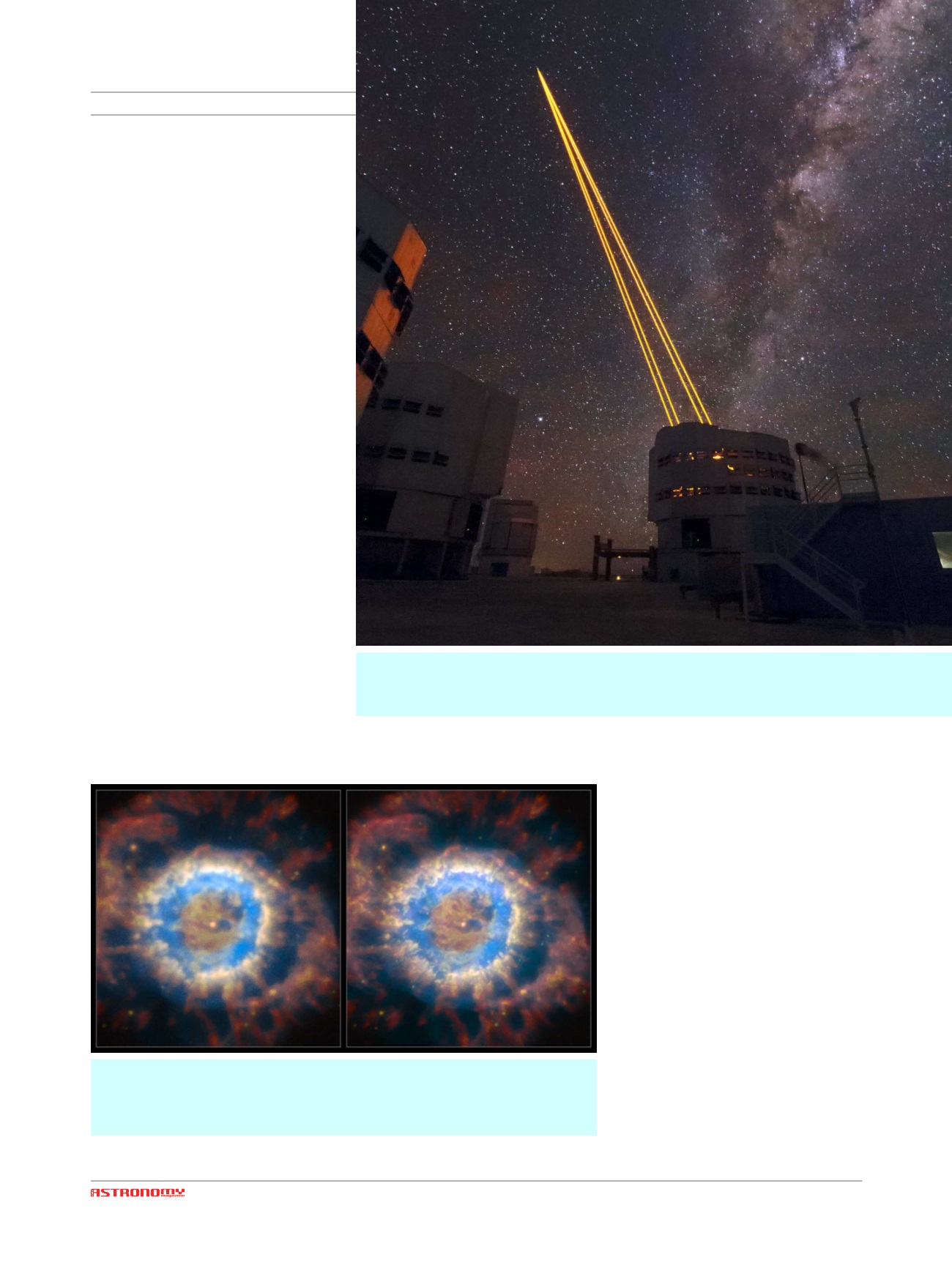

50
SEPTEMBER-OCTOBER 2017
the image quality by concentrating
the light to form sharper images, al-
lowing MUSE to resolve finer de-
tails and detect fainter stars than
previously possible. GALACSI cur-
rently provides a correction over a
wide field of view, but this is only
the first step in bringing adaptive
optics to MUSE. A second mode of
GALACSI is in preparation and is ex-
pected to see first light early 2018.
This narrow-field mode will correct
for turbulence at any altitude, al-
lowing observations of smaller
fields of view to be made with even
higher resolution.
“Sixteen years ago, when we pro-
posed building the revolutionary
MUSE instrument, our vision was to
couple it with another very ad-
vanced system, the AOF,”
says Ro-
land Bacon, project lead for MUSE.
“The discovery potential of MUSE,
already large, is now enhanced still
further. Our dream is becoming true.”
One of the main science goals of the
system is to observe faint objects in
the distant Universe with the best
possible image quality, which will
require exposures of many hours.
Joël Vernet, ESO MUSE and GALACSI
the largest distances. These are
galaxies in the making — still in
their infancy — and are key to un-
derstanding how galaxies form.”
Furthermore, MUSE is not the only
instrument that will benefit from
the AOF.
In the near future, another adaptive
optics system called GRAAL will
come online with the existing in-
frared instrument HAWK-I, sharpen-
ing its view of the Universe. That
will be followed later by the power-
ful new instrument ERIS. “ESO is
driving the development of these
adaptive optics systems, and the
AOF is also a pathfinder for ESO’s
Extremely Large Telescope,” adds
Arsenault.
“Working on the AOF has
equipped us — scientists, engineers
and industry alike — with invaluable
experience and expertise that we
will now use to overcome the chal-
lenges of building the ELT
.”
T
he four Laser Guide Stars Facility points to the skies during the first observations using the
AOF-equipped MUSE instrument. Adaptive optics assist ground-based telescopes by com-
pensating for the blurring effect of the Earth’s atmosphere on starlight. [Roland Bacon]
T
he planetary nebula NGC 6369 seen with natural seeing (left) and when the
AOF is providing ground layer correction of the turbulent atmosphere (right).
The AOF provides much sharper view of celestial objects and enables access to
much finer and fainter structures. [ESO/P. Weilbacher (AIP)]
Project Scientist, comments:
“In par-
ticular, we are interested in observ-
ing the smallest, faintest galaxies at
!
















